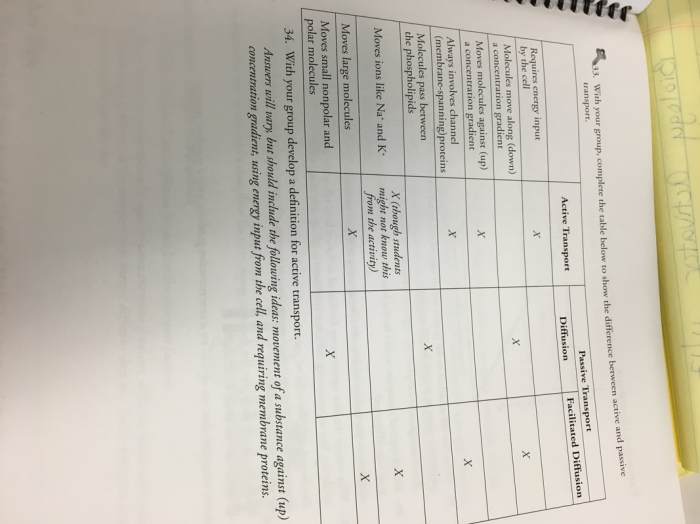The realm of cellular biology unfolds before us as we delve into the fascinating world of POGIL membrane structure and function. These biological barriers, composed of a delicate interplay of lipids and proteins, orchestrate a symphony of vital cellular processes, from compartmentalization to communication.
Membranes serve as the gatekeepers of cells, selectively permitting the passage of molecules and ions. They participate in intricate signaling cascades, relaying messages across the cellular landscape. Their dynamic nature ensures constant remodeling and adaptation, supporting essential functions like cell growth and division.
Membrane Structure

Biological membranes are thin, flexible barriers that surround cells and organelles. They are composed of a phospholipid bilayer, which is a double layer of phospholipids. Phospholipids are amphipathic molecules, meaning they have both hydrophilic (water-loving) and hydrophobic (water-hating) regions. The hydrophilic heads of the phospholipids face outward, towards the aqueous environment, while the hydrophobic tails face inward, away from the water.
In addition to phospholipids, membranes also contain cholesterol and proteins. Cholesterol is a steroid molecule that helps to stabilize the membrane and prevent it from becoming too fluid. Proteins are embedded in the membrane and perform a variety of functions, such as transporting molecules across the membrane, signaling, and cell adhesion.
Membrane Function
Membranes play a vital role in compartmentalization. They divide the cell into different compartments, each with its own unique function. For example, the plasma membrane separates the cell from its surroundings, while the nuclear membrane surrounds the nucleus.
Membranes also control the movement of molecules across the cell. Some molecules, such as water and oxygen, can cross the membrane easily, while others, such as ions and large molecules, cannot. Membranes contain proteins that help to transport these molecules across the membrane.
Finally, membranes play a role in cell signaling. They contain receptors that bind to signaling molecules from outside the cell. This binding can trigger a cascade of events inside the cell, leading to changes in gene expression, protein synthesis, or cell behavior.
Membrane Dynamics
Membranes are constantly being remodeled. This remodeling is necessary for cell growth, division, and repair. Membranes are also constantly being trafficked between different organelles. For example, proteins are synthesized in the endoplasmic reticulum and then trafficked to the plasma membrane.
Membrane dynamics are controlled by a variety of factors, including the cell cycle, the extracellular environment, and the cell’s metabolic state.
Membrane Disorders, Pogil membrane structure and function
Membrane disorders can occur when the structure or function of the membrane is disrupted. These disorders can be caused by genetic mutations, environmental toxins, or infections. Membrane disorders can lead to a variety of symptoms, depending on the type of membrane that is affected.
For example, disorders of the plasma membrane can lead to changes in cell shape, adhesion, and signaling. Disorders of the mitochondrial membrane can lead to problems with energy production. Disorders of the nuclear membrane can lead to changes in gene expression.
FAQs: Pogil Membrane Structure And Function
What are the key components of a biological membrane?
Biological membranes are primarily composed of lipids, arranged in a phospholipid bilayer, and proteins, which perform diverse functions.
How do molecules cross membranes?
Molecules can cross membranes through various mechanisms, including passive diffusion, facilitated diffusion, and active transport.
What is the role of membranes in cell signaling?
Membranes play a crucial role in cell signaling by housing receptors that bind to specific molecules, triggering intracellular responses.

